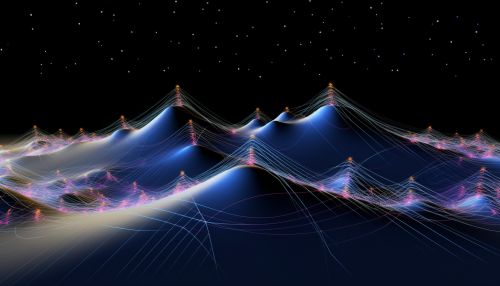The Physics of Quantum Mechanics in Quantum Field Theory
Introduction
Quantum mechanics is a fundamental theory in physics that provides a description of the physical properties of nature at the scale of atoms and subatomic particles. Quantum field theory (QFT), on the other hand, is a theoretical framework for constructing quantum mechanical models of subatomic particles in particle physics and their interactions.


Quantum Mechanics
Quantum mechanics is a branch of physics that deals with physical phenomena at microscopic scales, where the action is on the order of the Planck constant. It departs from classical mechanics primarily at the quantum realm of atomic and subatomic length scales. Quantum mechanics provides a mathematical description of much of the dual particle-like and wave-like behavior and interactions of energy and matter.
Quantum Field Theory
Quantum field theory is a theoretical framework that combines classical field theory, special relativity, and quantum mechanics (but notably not general relativity's description of gravity) and is used to construct physical models of subatomic particles (in particle physics) and quasiparticles (in condensed matter physics).


The Physics of Quantum Mechanics in Quantum Field Theory
In quantum field theory, the dynamics of a particle are described by the wave function, a complex-valued function of space and time. The wave function's absolute value squared describes the probability distribution of the particle's position at a given moment in time. The evolution of the wave function over time is given by the Schrödinger equation.
In contrast to this, in quantum field theory, the primary entity is not a particle but a field. In this context, a field represents a physical quantity that has a value for each point in space and time. For example, the electric field is a vector field, and the temperature distribution in a room is a scalar field. In quantum field theory, quantum mechanics' principles are applied to these fields, resulting in a quantum field, and the basic excitations or quanta of the quantum field are interpreted as particles.


Quantum Mechanics and Quantum Field Theory: A Comparative Analysis
Quantum mechanics and quantum field theory are both quantum theories, meaning they incorporate the principles of quantum mechanics. However, they apply these principles in different ways and to different physical systems.
Quantum mechanics is primarily concerned with the behavior of particles, such as electrons and photons. It describes these particles as existing in a superposition of states, each with a certain probability, until they are measured, at which point they collapse into a single state.
On the other hand, quantum field theory describes particles not as individual entities but as excitations of a field, similar to how waves in the ocean are excitations of the water. This allows quantum field theory to describe phenomena that quantum mechanics cannot, such as the creation and annihilation of particles.


Conclusion
The physics of quantum mechanics in quantum field theory is a vast and complex field, with many subtleties and nuances. It combines the principles of quantum mechanics, special relativity, and classical field theory to describe the behavior of particles at the smallest scales. Despite its complexity, it has been remarkably successful in explaining a wide range of phenomena, from the behavior of fundamental particles to the large-scale structure of the universe.
